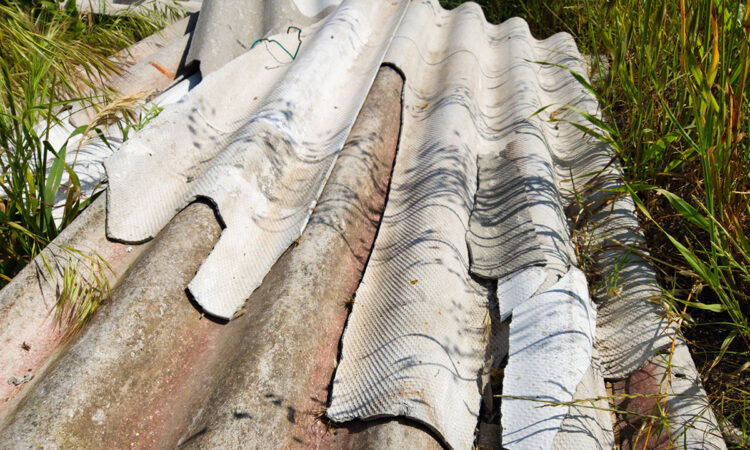
Historical Context of Asbestos Use
Asbestos was widely used in naval ships for many years due to its unique properties. It is fire-resistant, strong, and can insulate against heat. This made it a popular choice for shipbuilding, especially during the mid-20th century. However, the dangers of asbestos exposure to veterans were not fully understood at that time.
Common Areas Where Asbestos Was Found
Asbestos was commonly found in several parts of naval ships, including:
- Insulation: Used around pipes and boilers to prevent heat loss.
- Fireproofing: Applied to bulkheads and decks to protect against fire.
- Gaskets and Seals: Found in machinery to prevent leaks and maintain pressure.
Types of Asbestos Used in Naval Ships
Different types of asbestos were utilized in naval ships, including:
- Chrysotile: Also known as white asbestos, it was the most commonly used type.
- Amosite: Known as brown asbestos, it was used for insulation and fireproofing.
- Crocidolite: Also called blue asbestos, it was used in some specialized applications but is less common.
Understanding the historical context and common uses of asbestos on naval ships is crucial for recognizing the risks faced by veterans and their families.
Health Risks Associated with Asbestos Exposure
Short-Term Health Effects
Asbestos exposure can lead to several immediate health issues, including:
- Irritation of the Eyes and Skin: Contact with asbestos fibers can cause redness and itching.
- Respiratory Issues: Inhalation may result in coughing, wheezing, or shortness of breath.
- Gastrointestinal Distress: Some individuals may experience nausea or abdominal pain after exposure.
Long-Term Health Consequences
The long-term effects of asbestos exposure can be severe and include:
- Lung Diseases: Chronic exposure can lead to conditions like asbestosis, which causes lung scarring.
- Cancer: There is a strong link between asbestos and various cancers, particularly lung cancer and mesothelioma.
- Pleural Diseases: These include thickening of the pleura, which can cause breathing difficulties.
Asbestos-Related Diseases
Several diseases are directly associated with asbestos exposure, such as:
- Asbestosis: A serious lung condition caused by inhaling asbestos fibers.
- Mesothelioma: A rare cancer that affects the lining of the lungs and abdomen.
- Lung Cancer: Increased risk for those who have been exposed to asbestos, especially if they smoke.
How Veterans Are Affected by Asbestos Exposure
Symptoms of Asbestos Exposure in Veterans
Veterans exposed to asbestos may experience a range of symptoms, which can vary in severity. Common symptoms include:
- Shortness of breath: Difficulty breathing can occur, especially during physical activity.
- Persistent cough: A cough that does not go away may be a sign of lung issues.
- Chest pain: Discomfort or pain in the chest area can indicate serious health problems.
Diagnosis and Medical Tests
Diagnosing asbestos-related conditions often involves several steps:
- Medical history review: Doctors will ask about the veteran’s exposure to asbestos and any symptoms.
- Physical examination: A thorough check-up helps identify any physical signs of illness.
- Imaging tests: X-rays or CT scans can reveal damage to the lungs or other organs.
Case Studies of Affected Veterans
Several veterans have shared their experiences with asbestos exposure:
- Veteran A: After serving on a naval ship, he developed lung cancer and is now undergoing treatment.
- Veteran B: She experienced severe respiratory issues and was diagnosed with asbestosis, a condition caused by asbestos exposure.
- Veteran C: He has been part of a support group for veterans dealing with similar health challenges, highlighting the importance of community support.
Legal Rights and Compensation for Affected Veterans
Filing for VA Benefits
Veterans exposed to asbestos have specific rights when it comes to seeking benefits. The process includes:
- Gathering Documentation: Collect all medical records and service documents that show exposure to asbestos.
- Submitting a Claim: Fill out the necessary forms to file a claim with the Department of Veterans Affairs (VA).
- Follow-Up: Stay in touch with the VA to check on the status of the claim and provide any additional information if needed.
Veterans can find lawyers specializing in asbestos-related diseases to help them file VA claims and receive benefits.
Navigating Legal Claims
Veterans may also pursue legal claims against companies that manufactured or supplied asbestos products. Important steps include:
- Consulting a Lawyer: Seek legal advice from a lawyer who specializes in asbestos cases.
- Understanding the Process: Learn about the legal process, including potential timelines and what to expect.
- Gathering Evidence: Collect evidence that supports the claim, such as witness statements and product information.
Success Stories of Legal Battles
Many veterans have successfully won compensation for asbestos-related illnesses. Some notable outcomes include:
- Financial Compensation: Veterans receiving funds to cover medical expenses and lost wages.
- Increased Awareness: Legal cases have helped raise awareness about the dangers of asbestos.
- Policy Changes: Successful claims have led to changes in how companies handle asbestos safety.
Preventive Measures and Safety Protocols
Modern Safety Standards
To protect personnel from asbestos exposure, the Navy has established several modern safety standards. These include:
- Regular Inspections: Ships undergo frequent checks to identify and manage asbestos materials.
- Controlled Removal: Asbestos is removed in a safe manner, following strict guidelines to minimize risk.
- Air Quality Monitoring: Continuous monitoring of air quality ensures that asbestos fibers are not present in harmful amounts.
Protective Gear and Equipment
Using the right protective gear is crucial for those working in areas where asbestos may be present. Essential equipment includes:
- Respirators: These help filter out harmful asbestos fibers from the air.
- Protective Suits: Special suits prevent asbestos from coming into contact with the skin.
- Gloves and Boots: These provide an extra layer of protection during handling or removal tasks.
Training and Awareness Programs
Education plays a key role in preventing asbestos exposure. The Navy implements various training programs, such as:
- Safety Training: Personnel receive training on the dangers of asbestos and how to work safely around it.
- Emergency Response Drills: Regular drills prepare staff to respond effectively in case of accidental exposure.
- Awareness Campaigns: Ongoing campaigns inform all personnel about the risks and safety measures related to asbestos.
The Role of the Navy in Addressing Asbestos Exposure
Navy Policies on Asbestos
The Navy has established several policies to manage and reduce asbestos exposure among its personnel. These policies include:
- Regular Inspections: Ships and facilities are routinely checked for asbestos to ensure safety.
- Asbestos Management Plans: Each naval base has a plan to handle asbestos safely, including removal and disposal procedures.
- Training Programs: Sailors receive training on how to identify and avoid asbestos hazards.
Efforts to Remove Asbestos from Ships
The Navy has taken significant steps to eliminate asbestos from its vessels. These efforts involve:
- Asbestos Abatement Projects: Specialized teams work to safely remove asbestos from older ships.
- Retrofitting: New materials are used in ship construction to replace asbestos-containing products.
- Monitoring: Continuous monitoring ensures that any remaining asbestos is managed properly.
Support Programs for Affected Personnel
To assist veterans and active-duty personnel affected by asbestos exposure, the Navy offers various support programs:
- Health Screenings: Regular health check-ups are provided to detect any asbestos-related issues early.
- Counseling Services: Emotional support is available for those dealing with the effects of exposure.
- Compensation Guidance: Information on how to file for benefits is readily accessible to affected individuals.
Medical Treatments and Support for Asbestos-Related Conditions
Available Medical Treatments
Medical treatments for asbestos-related conditions focus on managing symptoms and improving quality of life. Common approaches include:
- Medications: Pain relievers and anti-inflammatory drugs can help manage discomfort.
- Surgery: In severe cases, surgery may be necessary to remove damaged tissue or fluid from the lungs.
- Rehabilitation: Pulmonary rehabilitation programs can assist patients in improving lung function and overall health.
Support Groups and Counseling
Support is crucial for veterans dealing with the effects of asbestos exposure. Various resources are available:
- Support Groups: These provide a space for veterans to share experiences and coping strategies.
- Counseling Services: Professional counseling can help address emotional and psychological challenges.
- Online Resources: Many organizations offer online forums and information for veterans and their families.
Innovative Research and Trials
Ongoing research aims to find better treatments and support for those affected by asbestos exposure. Key areas of focus include:
- Clinical Trials: New medications and therapies are being tested to improve outcomes for patients.
- Preventive Research: Studies are being conducted to understand how to prevent asbestos-related diseases in the future.
- Technology Development: Innovations in detection and treatment methods are being explored to enhance patient care.
Impact on Families of Veterans Exposed to Asbestos
Emotional and Psychological Effects
The exposure of veterans to asbestos can have a significant impact on their families. The emotional and psychological toll can manifest in various ways, including:
- Anxiety and Stress: Family members often worry about the health of their loved ones, leading to increased anxiety.
- Depression: The uncertainty surrounding health issues can lead to feelings of sadness and hopelessness.
- Isolation: Families may feel alone in their struggles, as they navigate the complexities of medical care and legal claims.
Financial Burdens
The financial implications of asbestos exposure can be overwhelming for families. Some common financial challenges include:
- Medical Expenses: Treatment for asbestos-related diseases can be costly, often leading to significant out-of-pocket expenses.
- Loss of Income: If a veteran is unable to work due to health issues, the family may face a loss of income, making it difficult to meet daily needs.
- Legal Fees: Navigating the legal system for compensation can incur additional costs, adding to the financial strain.
Support Systems for Families
To cope with the challenges posed by asbestos exposure, families can seek various support systems, such as:
- Support Groups: Connecting with others in similar situations can provide emotional relief and practical advice.
- Counseling Services: Professional help can assist families in managing their emotional and psychological challenges.
- Veterans’ Organizations: Many organizations offer resources and support specifically for veterans and their families, helping them navigate the complexities of asbestos exposure.
Raising Awareness About Asbestos Exposure on Naval Ships
Public Awareness Campaigns
Raising awareness about the dangers of asbestos exposure on naval ships is crucial. Public campaigns can help inform both veterans and the general public about the risks associated with asbestos. Key strategies include:
- Community Workshops: Organizing local events to educate people about asbestos and its health effects.
- Social Media Outreach: Using platforms like Facebook and Twitter to share information and personal stories.
- Partnerships with Health Organizations: Collaborating with health groups to spread awareness and provide resources.
Educational Programs
Educational programs play a vital role in informing service members and veterans about asbestos exposure. These programs can include:
- Training Sessions: Offering training for current naval personnel on identifying and handling asbestos safely.
- School Programs: Introducing lessons in schools about the history and dangers of asbestos, especially for children of veterans.
- Online Resources: Creating websites and online courses that provide information about asbestos and its health risks.
Role of Veterans’ Organizations
Veterans’ organizations are essential in raising awareness and supporting affected individuals. Their contributions include:
- Advocacy: Lobbying for better policies and protections for veterans exposed to asbestos.
- Support Networks: Establishing groups where veterans can share experiences and find help.
- Information Distribution: Providing pamphlets and materials that explain the risks of asbestos exposure and available resources.
Historical Cases of Asbestos Exposure in the Navy
Notable Incidents and Their Impact
Throughout history, there have been several significant incidents of asbestos exposure within the Navy. These cases highlight the dangers associated with asbestos and its long-lasting effects on veterans. Some notable incidents include:
- The USS Oriskany: This aircraft carrier was found to have high levels of asbestos during its service, leading to numerous health issues among crew members.
- The USS Intrepid: Asbestos was used extensively in the construction of this ship, resulting in many veterans suffering from related diseases years after their service.
- The USS Forrestal: This ship experienced a tragic fire in 1967, which exposed many sailors to asbestos fibers that had been disturbed during the incident.
Lessons Learned from Past Cases
The historical cases of asbestos exposure in the Navy have taught important lessons, including:
- Need for Awareness: Understanding the risks associated with asbestos is crucial for current and future naval personnel.
- Importance of Safety Protocols: Implementing strict safety measures can help prevent exposure to harmful materials.
- Ongoing Monitoring: Continuous health monitoring for veterans exposed to asbestos is essential for early detection of related diseases.
Changes in Navy Policies Over Time
In response to the dangers of asbestos, the Navy has made several policy changes, such as:
- Banning Asbestos Use: The Navy has prohibited the use of asbestos in new ship construction and maintenance.
- Health Screening Programs: Initiatives have been established to regularly screen veterans for asbestos-related health issues.
- Training for Personnel: The Navy now provides training on the risks of asbestos and how to handle materials safely.
Future Directions in Asbestos Management
Emerging Technologies for Asbestos Detection
Asbestos detection is crucial for ensuring safety. New technologies are being developed to improve how asbestos is found. Some of these include:
- Advanced Imaging Techniques: These methods use special cameras to spot asbestos fibers in materials.
- Portable Testing Devices: Small tools that can quickly test air and surfaces for asbestos presence.
- Drones for Inspection: Drones can reach hard-to-access areas on ships and buildings to check for asbestos without putting people at risk.
Future Policies and Regulations
To better manage asbestos, new rules and guidelines are being created. These may include:
- Stricter Safety Standards: Ensuring that all workplaces follow high safety measures to protect workers.
- Regular Inspections: Mandating frequent checks of older ships and buildings for asbestos.
- Clear Reporting Procedures: Establishing easy ways for workers to report asbestos concerns without fear of punishment.
Global Efforts in Asbestos Management
Countries around the world are working together to tackle asbestos issues. Key efforts include:
- International Treaties: Agreements between nations to ban or limit asbestos use.
- Shared Research: Collaborating on studies to find better ways to detect and remove asbestos.
- Public Awareness Campaigns: Educating people about the dangers of asbestos and how to stay safe.




